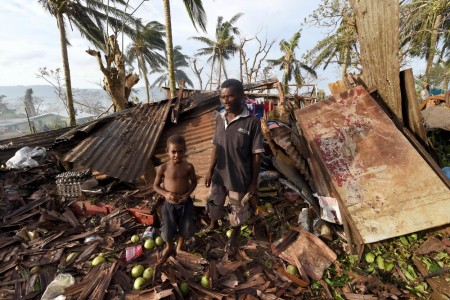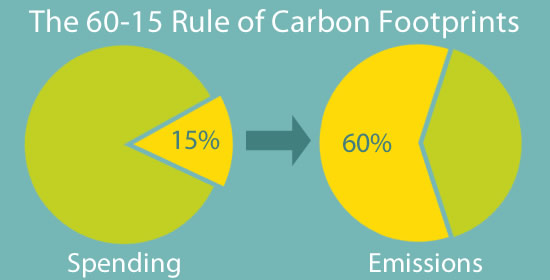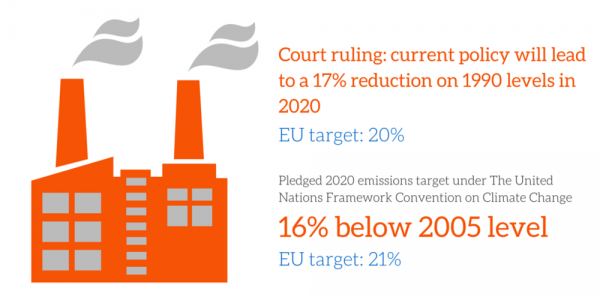December 24, 2015 – It is Christmas Eve and this morning I woke up to temperatures of 16 Celsius (61 Fahrenheit) here in Toronto. Although it is winter it certainly doesn’t resemble it. Toronto’s December is turning out to be one of the warmest if not the warmest on record. In fact all of fall has been pretty benign. Now I know this is a weather anomaly and not climate change, but it portends what Toronto’s future may be as total carbon emissions continue to rise. Which brings me to the topic at hand.
As a Canadian citizen what personal action can I take to reduce emissions and what legal recourse do I have should my government not set carbon reduction targets to meet the upper sustainable limit of between 1.5 and 2 Celsius rise in global temperatures as set at COP 21 in Paris?
Right now the federal government is committed to a 30% reduction in greenhouse gas emissions from 2005 levels by 2030. As part of Canada’s global contribution, experts agree that the target is insufficient to meet the 2 Celsius upper limit. That if all countries presented this target global temperatures would rise more than double the COP 21 goal.
In addition here in Canada our federal government is relying on the sub-jurisdictions of the country, that is the provinces and territories, to come up with individual carbon reduction plans with the federal involvement being coordination and oversight. But what if provinces and territories don’t set targets that will meet the objectives of COP 21?
What then is a citizen’s obligation to make things right?
Attacking Carbon Emissions Personally
Each of us has the ability to do our part. We can reduce our personal carbon footprint. We can create our own carbon budget and through behavior change reduce our greenhouse gas contributions. We can do this by making intelligent choices. Some examples:
- choosing to live in a smaller home
- getting rid of the second car
- switching to an electric or hybrid vehicle on our next purchase
- insulating our existing home to make it energy efficient
- turning down a thermostat when we’re not in a room or away from home
- buying local produce
- throwing out less food as waste
- putting solar panels on our roofs
- buying electricity from green suppliers…..
What’s an ideal carbon budget for an individual? There is a website where you can get answers. It’s called Shrink That Footprint. Use the site to calculate your carbon footprint today. A calculation will capture all the emissions generated to provide you with housing, travel, food, energy and other service and product needs. Once you have your totals you can figure out where you can implement reductions.
There are simple behaviors you can change. I’m looking at some basic habits I have that I intend to alter after visiting this website. For example I pledge to no longer fill my tea kettle to the top when boiling water. From now on I’ll just fill it to the amount needed each time I use it. Another example that I intend to implement. I will no longer let my computer run when I step away from it for any length of time. And I will unplug all the charging devices I use for my e-reader, smartphone and laptop and only plug them in when I need a recharge.
Sometimes the simplest of choices is to do less of something carbon intensive that you do today. These are easy to identify. For example: can you switch to public transit part of the time for daily work commutes? Or can you use a bicycle instead of a car? Or can you car pool rather than drive alone into the office each day? Or can you walk to work one day per week? These are simple behavior changes you can begin to do today.
The potential to individually shrink is enormous but having a hands-on tool to help you makes it much easier. At Shrink That Footprint you have a tool set that includes not only a carbon calculator but also a 30-day shrink exercise to get you started. Use it to help identify behaviors and initiate practices to find and implement lower carbon alternatives.
Follow the 60-15 rule which states that 60% of your emissions come from 15% of your expenditures.
That spending includes carbon intensive purchases such as electricity, natural gas, gasoline, flying and food. To maximize reductions figure out ways to lessen the spending on these items. That means driving your car less. Spending less on food by wasting less of it. Turning the thermostat down or the lights off when you leave a room so you use less electricity and burn less gas.
Tackle these five carbon intensive activities and purchases and shrinking that person footprint becomes pretty easy.
Letting friends and family know what your doing may get them to make the same effort.
But how do you get governments to do the right thing?
Holding Government to Account
Can you influence your country to be as diligent as you in tackling carbon emission reductions? What if government doesn’t take greenhouse gas emission reductions as seriously as you? What’s your recourse?
You can take to the streets and protest like 350.org and Avaaz.org.
But better yet you can sue.
That’s what 886 Dutch citizens did in a collective lawsuit against the government. And they won.
In a June 24, 2015 ruling by The Hague District Court in The Netherlands, the court ruled in favor of the civil action brought against the Dutch government.
The Netherlands government had set an emission reduction target of between 14 and 17%. It was ruled insufficient by the court.
The citizens petitioned the court on the principle that their government was endangering their safety and health by failing to meet an acceptable standard established by the United Nations and the Intergovernmental Panel on Climate Change.
The court in its ruling agreed stating that the government policy was “below the norm” defined as “25% to 40% for developed countries deemed necessary in climate science and international climate policy.”
The court further concluded that it was the state’s responsibility “to avert the imminent danger caused by climate change, also in view of its duty of care to protect and improve the living environment. The State is responsible for effectively controlling the Dutch emission levels. Moreover, the costs of the measures ordered by the court are not unacceptably high. Therefore, the State should not hide behind the argument that the solution to the global climate problem does not depend solely on Dutch efforts. Any reduction of emissions contributes to the prevention of dangerous climate change and as a developed country the Netherlands should take the lead in this.”
Can a decision made in a Dutch court have ramifications for citizens of other nations?
For the most part legal systems are limited by national boundaries. But international law permits judgments in one country to be recognized as enforceable in other jurisdictions. Therefore, The Hague District Court’s legal precedent may lead to similar law suits by citizens in other countries and indeed they are starting to crop up.
In fact law suits related to the issue of climate change are even happening between nations with the island countries of the Pacific and Indian Ocean considering or launching legal action against fossil fuel companies and Developed World nations to seek compensation for damages from climate change already inflicted on them.


















